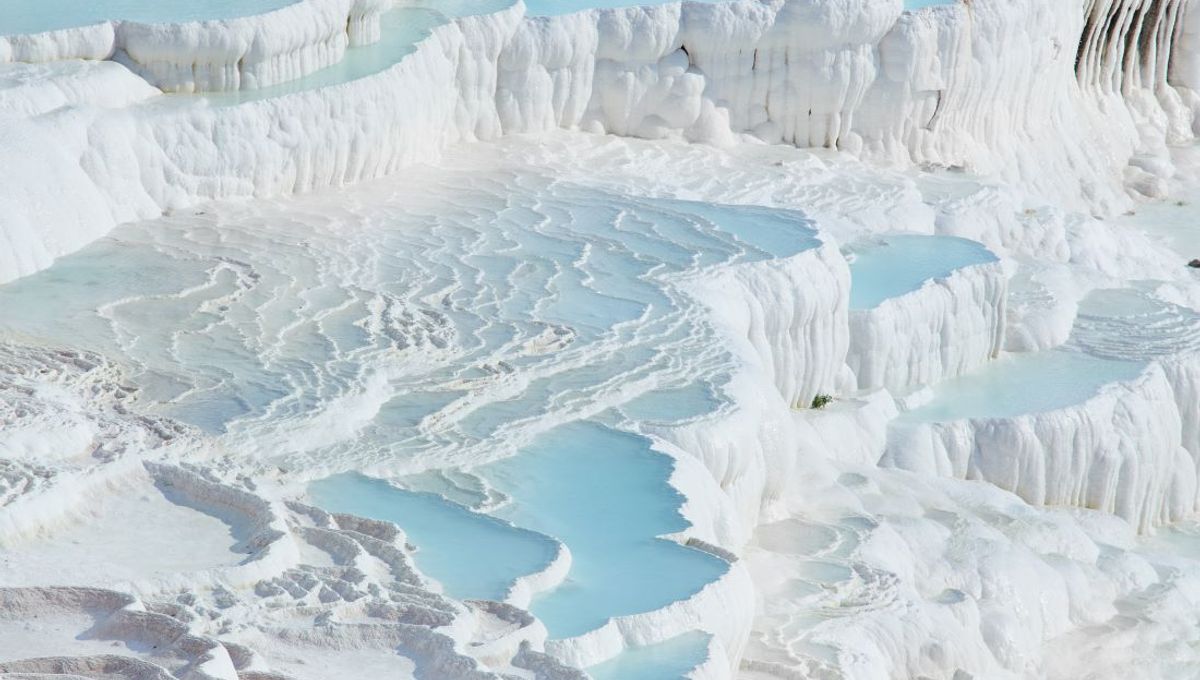
This article first appeared in Issue 7 of our free digital magazine CURIOUS.
Since the second century BCE, the city of Pamukkale, which neighbors the ancient Roman site of Hierapolis, has been used as a natural spa. The ancient formation was once believed to have healing powers, decked out with hot thermal springs and white terraces that make for some pretty visually stunning R&R.
The natural site in Denizli Province in southwestern Turkey was made possible by thermal spring water that brought bucketloads of calcite into the region. It’s classed as travertine, a type of limestone that forms when a mineral-rich lake or river system evaporates and leaves behind a crusty, but admittedly quite beautiful, calcium carbonate trail.
As a UNESCO World Heritage Site since 1988, it’s recognized as a site of cultural and natural heritage to be protected and admired. A fitting status for a spot that once bathed the kings of Pergamon, a Greek state that ruled during the Hellenistic period.
Subscribe to our newsletter and get every issue of CURIOUS delivered to your inbox free each month.
Hierapolis is the name of the ancient Greek city that was built on top of the travertine formation, which has been nicknamed the Cotton Palace for its snow-white limestone. The crusty cotton formed over millennia as mineral-rich waters dripped down the mountainside.
As a type of sedimentary rock, the travertine was deposited by 17 hot springs in the region whose temperatures range from 35°C (95°F) to 100°C (212°F), aka balmy to boiling. The milder temperatures made for a warming spa for humans of the second century BCE at a time when doctors considered it to be a healing center.
The site’s historic significance is remembered in a museum that contains historical artifacts including Bronze Age trinkets. Its past is also spelled out in archaeology, as the site boasts the Theatre of Hierapolis and a necropolis (ancient cemetery) with sarcophagi that stretch for over a mile.
How to get there
The Çardak Airport is the nearest airport to Pamukkale. From there, it’s around an hour’s drive.
CURIOUS magazine is a digital magazine from IFLScience featuring interviews, experts, deep dives, fun facts, news, book excerpts, and much more. Issue 10 is out now.
Source Link: A Mineral Forest For A Natural Spa